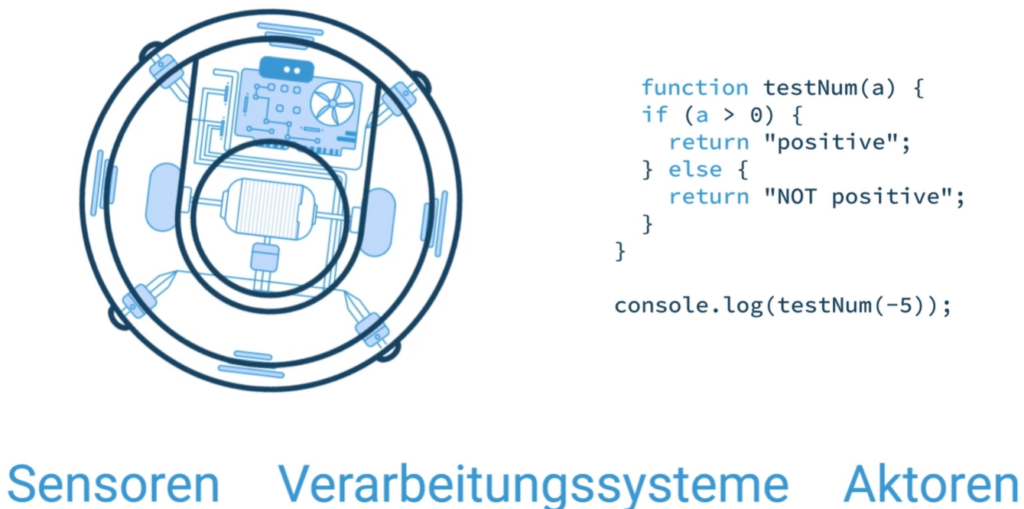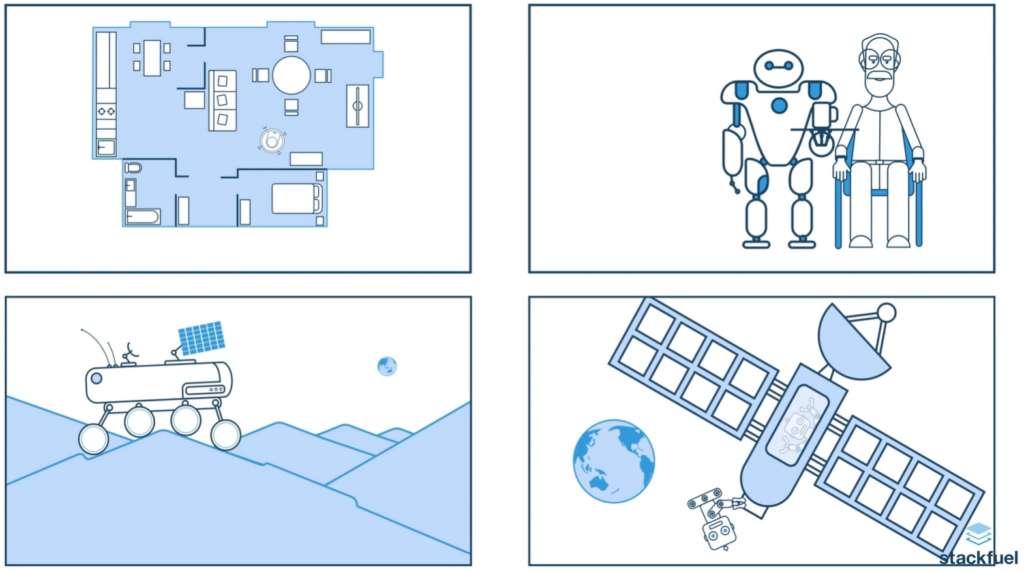A few decades ago, robots were pure science fiction, but today it's hard to imagine life without them. Whether as a small everyday helper for vacuum cleaning, for manufacturing cars in industry or for exploring foreign planets - robots have long since taken on a variety of different tasks. In this article, we explain how robots work and how these small, programmed machines can help you with difficult or dangerous tasks.
The history of robotics
Controllable machines have fascinated people since ancient times. But where does robotics have its roots? The term 'Robot' comes from the Czech language and means as much as 'Frondienst'. In a Czech science fiction drama, these artificial humans were created as early as the 1920s as workers who perform tasks in industry in place of humans.
In the 1950s, fiction became reality: George Devol and Joseph F. Engelberger invented the world's first program-controlled machine in the USA. Today, robots also play an important role outside industrial applications.
The key to the further development of intelligent machines lies in the digital transformation. Key technologies such as automation and artificial intelligence have meant that robots can now work autonomously and perform tasks quickly and precisely. So what exactly do you understand by the term robotics?
What is robotics: a machine with many faces
Robotics as a scientific discipline deals with programmable and versatile machines. Whether gripping, drilling or assembling - robots can be equipped with various tools to perform different tasks automatically for you. So is every automatic machine a robot?
No. An automaton is a machine that can perform one - but only this one - specific task automatically. A robot, on the other hand, can be programmed and retooled. This makes it flexible and suitable for a large number of tasks can be used. Where an automaton can only repeat the predefined operation, you can reprogram a robot to grip or assemble, but also to weld, drill or glue.
For robots to do all these different tasks, they need three components:
- Sensors
- Processing systems
- Actuators

The Sensors are the so-called Sensory organs of a robot. Robots perceive their environment via GPS, microphones or distance meters, for example, and can pick up on influences or stimuli. The Processing systems such as circuits, microprocessors or cloud connections, on the other hand, make up the Brain of the robot. Sensor information is recorded via these and instructions are issued. These instructions are in turn sent to the Actuators These can be motors, loudspeakers or lasers, for example. These form the Muscles of the robot and allow it to interact with its environment.
The branches of robotics: What can robots do?
Due to the wide range of applications, various branches of robotics have developed:
- Industrial robot for example, are the classic robotic arms for the production of goods. They are the workhorses of today's manufacturing industry. Among other things, they are used as welding robots in the construction of cars. They are usually large, very heavy machines that work at high speed. They are designed to support you as a human being. In this way, your learning ability and expertise are combined with the strength and precision of the robot.
- Service robot on the other hand, take over services for you. This category also includes the vacuum cleaner robot or robots that are used in care. In contrast to collaborative robots, they are designed for direct interaction with humans. They usually have voice control or facial recognition to communicate with you.
- Another branch is formed by the humanoid robot. They are externally modeled on humans and developed primarily for joint use by humans and robots. This way, the humanoid robot can learn the use and application of other tools by observing your movements or actions - without you showing or programming it directly.

Are robots the workers of the future?
Robots have numerous advantages over manual labor or simple machines: they work faster, are stronger and perform the tasks more precisely than humans. They do not get tired and can be in operation around the clock. Unlike a regular production machine, robots can always be reprogrammed and are therefore much more flexible in their tasks and use.
Robots are also robust in the face of hostile environmental conditions and can be deployed wherever you, as a human being, are dependent on their support. They explore ocean depths, defuse bombs or repair defective satellites in space.
Robotics is constantly evolving and taking on more and more complex tasks. But what can the small, intelligent machines not (yet) do? Emotional competences and creativity will continue to play an important role in the future. Robots are good at imitating and copying, but so far they have not been able to develop anything completely new.
Also in the critical thinking - that is, skills such as taking responsibility or questioning things - you are far superior to the robots. And last but not least Communication and empathy are further strengths of the human being. You are capable of exchanging ideas with your fellow human beings and working together to develop joint solutions. Robots lack this competence as well.
What is robotics? - Conclusion
Robotics aims to develop machines that are able to perform tasks automatically and independently. By taking difficult or repetitive tasks off our hands, they assist humans. They can either learn the interactions through technologies like artificial intelligence or be programmed by humans. Would you like to learn how to program machines intelligently? Contact us and we will help you to hopefully soon have robots take over the tedious tasks of everyday life for you.





